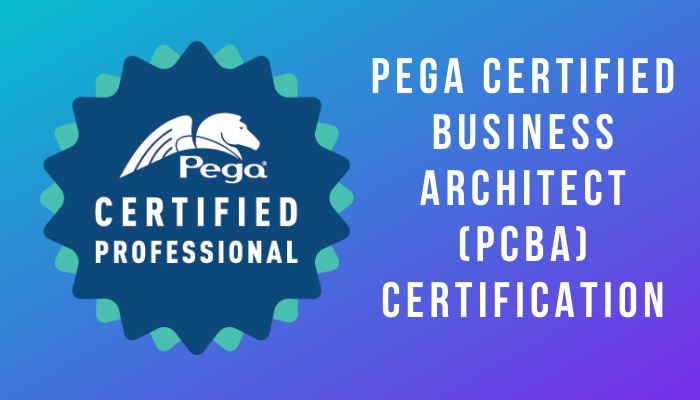The way we do business is growing as business models develop, and we shift to a digital future. Organizations are going through constant upheaval. At the core of this change is the business architect. Once held a corner role, business architecture is now taking the front-and-center stage in shaping enterprise conversion and the organizations of tomorrow.
We study some of the truths about the business architect role, and potential focuses for the purpose, career path options, and what the future holds for a discipline that finds itself at the center of business and technology change.
The Truth about the Business Architect Role
Due to rising customer expectations and technology, the volume and rate of change that today’s organizations face have grown so significantly that most organizations are delivering enterprise-wide transformation and planning to become more agile for future change.
Business architecture is an essential enabler of both, which is why they require the business architect role is growing.
While the business architect role was initially envisioned as a senior strategic role responsible for architecting organizations in response to change, the position has not always been deployed as such, and this disconnect has created confusion about the character. It has led to a lack of qualified resources to meet the demand truly.
The trouble is related to whether the role of a business architect is to create and manage the enterprise business architecture knowledgebase, including blueprints such as capability maps and value streams, or to grow the business and change strategy applying these blueprints.

Part of the basis for this confusion was that first on, and some organizations decided to leverage a one size fits all plan for deploying business architecture versus applying it correctly to their organization’s opportunities and maturity, which is now known as best practice.
Earlier, business architects often focused more on making maps than designing and developing their organizations. There are solid reasons for how this center came about. Although all organizations have a business architecture, it is not typically documented so that documentation must be built, at least to the least baseline.
Also, as the discipline was emerging and as practitioners were learning, there was a substantial but significant emphasis on how to build the knowledgebase. Business architects often made maps and showed them to officials without clear steps for how the plans would be used for business value.
Fortunately, the discipline has been commonly practiced globally, so the role and its value have advanced to sharpen over time. What is clear is that the most critical value for a business architect is in a strategic position, not merely as a knowledgebase steward to aid organizations to envision and execute change.
The Next-Generation Business Architect’s Focus
Recognizing that business architecture is a critical enabler both for enterprise-wide strategy execution and transformation as well as agility, the role is increasingly concentrated in two areas: strategic advantage and enablers of agility.
Business Architects as Strategic Advantage
Organizations are not just looking at the working world of today, and they are also investing heavily in trying to get future business platform models and what the customer of the future is going to look like and require.
Many organizations have also spent an innovation capability, which enables them to generate insights and prototypes that serve to inform current and future business and technology strategies.
Increasingly, business architects see themselves not only informing the strategy but also at the heart of business transformations: identifying the overall consequences those transformations will have on the organization and changing the new direction into an actionable set of architectural blueprints and executable roadmaps.
A new aim is for business architects to work with customer experience teams; in this situation, business architects take along the private business information that helps shape capabilities and value streams to what customers most need and, ultimately, demand.
We even get the business architect looking at longer-term horizons and being deployed at the heart of innovation teams. Indeed, business architects are helping to grow the capabilities required to achieve the possible futures that are being designed and developed, as well as the overall field for change activities, in conjunction with innovation leadership.
When we see at the organizations that have innovated in their industries, their strategies, and innovative ideas have come from within; they were not given playbooks from consulting firms or solution vendors.
The key is being able to recognize opportunities and then create executable strategies around those opportunities a role for business architects, making architects deciding for strategic benefit.
Moreover, the work of business architects serves organizations to expand beyond the typical planning horizon and look toward longer-term futures while ensuring the alignment of strategies and portfolios.
Business Architects as Enablers of Agility
The business environment no longer moves at one pace; terms such as “Agile” and “sprints” are now a standard part of the business lexicon. The business architect is even more critical in the new multi-speed organization, from shaping strategies to playing a vital role before the occurrence of Agile activities.
The truth is that a business architect can allow no value once the Agile teams are up and running, due to the speed at which they will be repeating and developing new solutions.
However, the business architect performs a crucial role across various areas in the Agile space, including:
Strategy:
Before any Agile activities, the overall strategy and scope of development need to be defined. This includes a catalog of results to the business and IT architecture and the resulting operating model consequences for either new propositions or changes to existing hypotheses.
In connection with the product owner, the business architect develops the scope for any plans.
Backlog Development and Sprint Planning:
A roadmap and backlog of work are, however, allowed in Agile, but these are also used to control what goes into sprint planning for the team.
The business architect can perform a role on the side that develops the supply and plans what goes into each sprint, serving to talk on business impacts and ensure what is being set aligns with the strategy and what is chosen to move forward delivers the best value.
Sprint Reviews:
Typically, at the end of each sprint, there is a review of the team’s achievements during this period. Work is distributed among key stakeholders to generate input into what has been developed, allowing the team to stay or repeat, depending on the feedback received.
The business architect represents a pivotal role at this stage, as it is crucial to not only see at the functions, but also the alignment to the strategic plan and defined future vision.
Oversight and Support:
While sprints run, there is still a requirement for some form of control, but this must be done in such a way as not to reduce down teams.
The business architect contracts at a high level when necessary to ensure alignment and that companies are working toward the strategy. Also, the business architect is an available subject matter expert to Agile teams and may be taken into a sprint team if there is a question around the business or the strategy that needs clarification.
Career Options for Business Architect
Accept a Business Architecture Professional Position:
In this option, the business architect can either lead a business architecture practice increasingly more complicated and more significant change initiatives.
Move to a Senior Business Role:
Top business architects can move into various positions within the business. Business roles such as product owners, strategists, or even leaders of business units are viable alternatives for the next part of a business architect’s career.
Take on an Interdisciplinary Role:
The majority of new businesses pushed on by digital and mobile have seen an improvement in the number of people joining startups instead of the traditional corporate world. The startup world requires not only speed but people with a diversity of skills, such as those possessed by business architects.
Business architects also have experience in business and operating models. Business architects’ skills and knowledge are essential to any startup, making startups a unique career choice for the business architect.
Become a Management Consultant:
Business architecture has become an element for changing strategy and shaping change and organizational initiatives. Such skills are now in even higher demand, and we are seeing traditional management consulting firms looking for people with skills who have experience in these areas.
Management consulting gives business architects with a logical next level, whether working for themselves or as part of an established firm.
New Requirements for the Business Architect Role
As business architects are more leveraged in their strategic role, they must develop, over time, a more specific set of competencies.
Business architects not only require to have foundational business architecture knowledge, two but they also need general business knowledge and understanding and a full set of soft skills, such as power, influence, collaboration, facilitation, and communication.
Since business architects work with many teams across the plan execution lifecycle, they also require to be well versed in how other functions operate, such as strategy, customer experience, and planning.
Throughout the development of the business architect role, the need for individuals to understand development methodologies, exceptionally Agile, has become very important in playing a crucial role within Agile teams.
Also, with the majority of digital and the role technology plays in business, the business architect needs a working knowledge of the course and future technologies and ideally some level of experience, not just to mix with IT architects, but to become an asset to the business.
As business and technology advance to collide, technology-savvy business architects can become trusted partners for recognizing strategic and business model opportunities and then turning them into reality.
Life After Business Architecture
The business architect role can be a long-term career or part of a course. The great news is that in both instances, a business architect will gain significant benefits despite the preferred route.
Due to the nature of the role, business architects achieve enterprise-wide information, relationships, and experience with cross-business-unit initiatives.
They develop a deep and rich set of skills, such as big-picture thinking and large-scale problem doing, which relatively few have the opportunity to gain from such direct experience.
Luckily, the role of a business architect opens the door to many future opportunities.
Conclusion
From driving forward strategy to help in Agile teams, the future has never seemed so bright for the individual business architect and the discipline of business architecture itself. To enough leverage this system, organizations must have a concept for how they want to deploy it and invest in retaining great business architects and promoting their career path.

For the individual, the broader knowledge of business architecture, once regarded as merely a niche discipline, is starting to open many opportunities, enabling today’s architects to become tomorrow’s business leaders.
However, individual business architects must get control of their career paths by planning where they want to go long term and then getting the experience that will aid them to get there.



